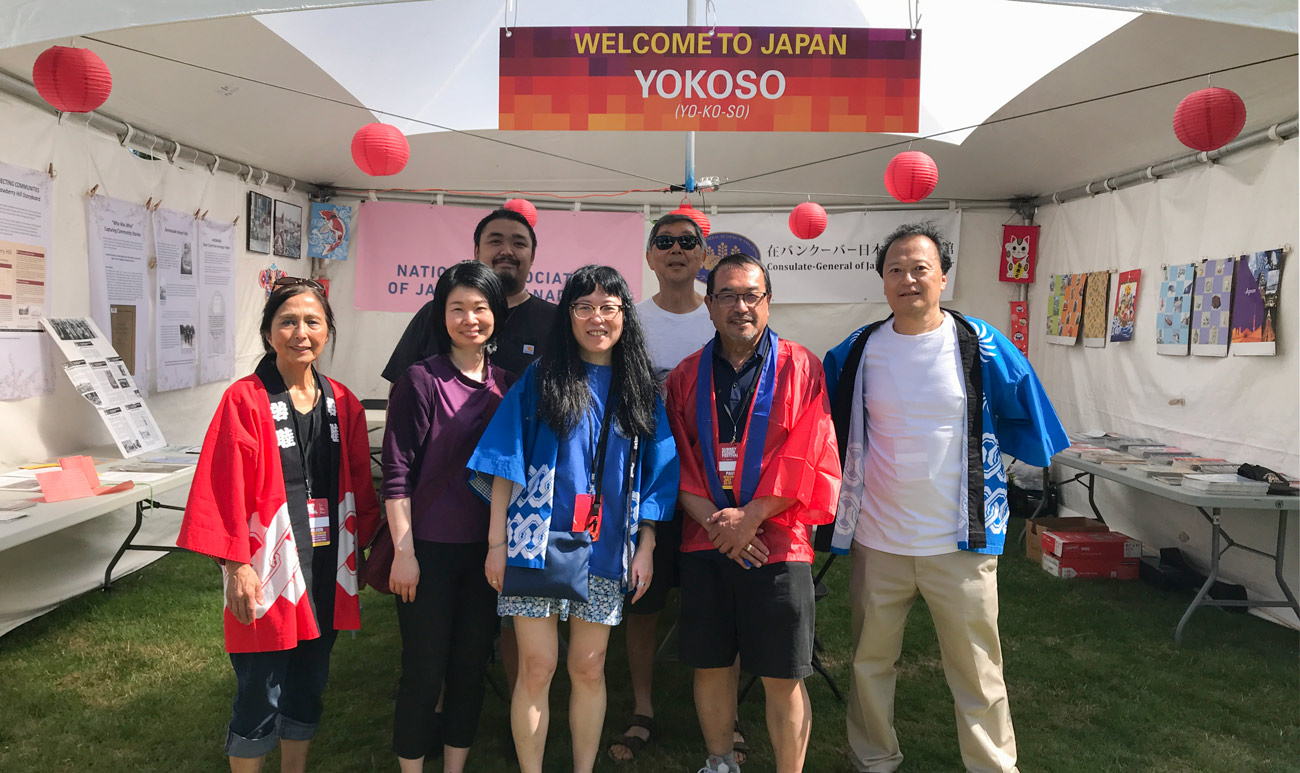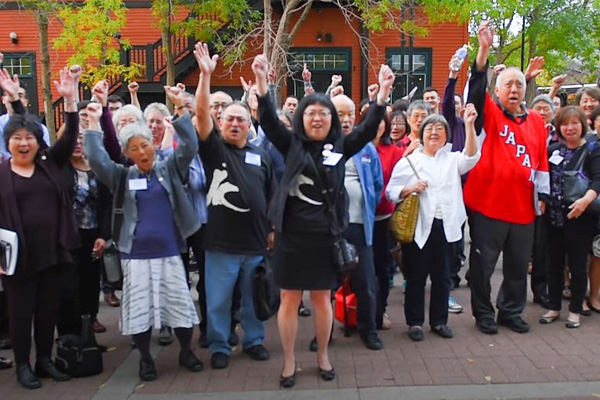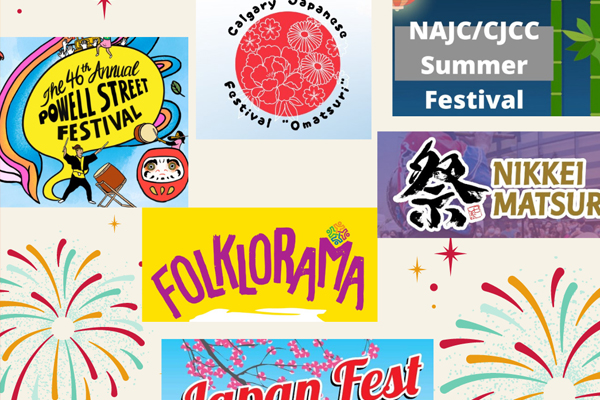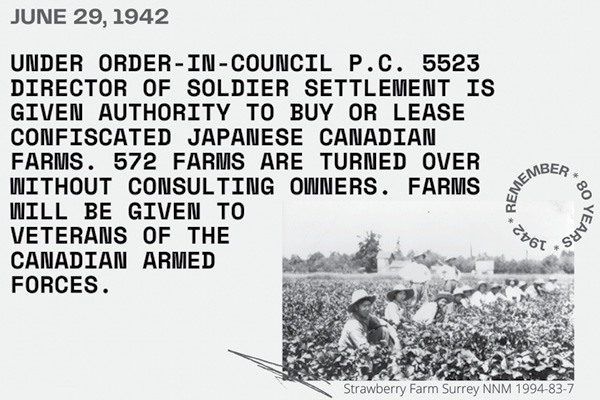by Lorene Oikawa
Festivals and in-person gatherings have filled our calendars. With each event, it has been a wonderful opportunity to provide information and share stories about Japanese Canadians. At the Surrey Fusion Festival, I organized the Japan / Japanese Canadian Pavilion and included stories of Japanese Canadians in Surrey. I kept hearing people say that they never knew about the history of Japanese Canadians in Surrey. Neither did I when I was growing up in Surrey. Our heritage is invisible because of the forced uprooting of Japanese Canadians and the omission of our history in our communities.
One area in Surrey called Strawberry Hill got the name because of the large number of Japanese Canadian strawberry farmers who not only cleared and farmed the land they created the Surrey Berry Growers’ Co-operative Association and the Strawberry Hill Japanese Farmers’ Association. They helped pay for the Strawberry Hill Community Hall and developed a major road. This information was provided in one of the panels I had at the Pavilion and was previously in an exhibit at the Museum of Surrey.
I worked with the curator at the Museum of Surrey to obtain stories and a special side exhibit was developed and launched and shown along with the Broken Promises exhibit that was at the museum and is now at the Royal BC Museum in Victoria. Part of the special Surrey exhibit was a reproduction of a letter and photo and copies of some letters from the Joan Gillis fonds acquired by UBC in 2018.
The fonds contains 149 letters and 10 photographs sent to Joan Gillis by a group of Japanese Canadian friends who were also students at Queen Elizabeth Secondary School in Surrey before they and their families were forcibly uprooted in 1942. Most of the correspondence was from 1942 to 1946 when the Japanese Canadian former students were interned/incarcerated in camps in British Columbia, and in farms in Manitoba and Alberta. The letters provide some insights into how the young Japanese Canadians lived while interned/incarcerated, but the letter writers also knew that government censors were reviewing all correspondence. Selections from the Joan Gillis fonds can be viewed online in a digital exhibit, I Know We’ll Meet Again https://bit.ly/3Q61JkQ
Last month, in recognition of the historical value of the Joan Gillis fonds, the fonds were added to the Canadian Commission for UNESCO’s Canada Memory of the World Register. This is a major initiative to preserve and protect valuable documentary works of historical significance which reflect the diversity of Canada. The UNESCO announcement may be read at this link https://bit.ly/3blmb2p
At Powell Street Festival and Surrey Fusion Festival, there were people who did not know about Hastings Park being used to hold about 8,000 Japanese Canadians before being shipped out to internment/incarceration camps. Many were Japanese Canadians who said their family did not talk about it.
80 years ago, the first arrivals of Japanese Canadians from outside of Vancouver arrived at Hastings Park on March 16, 1942. On September 1, 1942, the population at Hastings Park was 3,866. By September 30, 1942, Hastings Park Assembly Centre is officially closed. The Hastings Park hospital remains open with 105 people who remain there until March 1943 when the hospital is closed, and the patients and staff are sent to a new Sanatorium in New Denver.
There are four signs at Hastings Park that tell part of the stories in the words of the survivors. Some of the Japanese Canadian community members who worked on the signage including Dan Tokawa and myself have taken on roles in the new Japanese Canadian Hastings Park Interpretive Centre Society. We are working on the next phase of the project which is an interpretive centre at Hastings Park.
We would like feedback from the Japanese Canadian community. Please consider answering the survey at bit.ly/Hastings-Park Email JCHPICS2022@gmail.com if you have any questions or want to be added to a mailing list for updates.
The NAJC received an invitation from our friend Setsuko Thurlow, an international disarmament advocate and a survivor of the Hiroshima bombing who accepted the Nobel Peace Prize on behalf of the International Campaign to Abolish Nuclear Weapons (ICAN) to attend the zoom webinar 2022 Hiroshima – Nagasaki Day Commemoration on August 9th from 7-8:30 p.m. Eastern time. More info at www.hiroshimadaycoalition.ca & register at tinyurl.com/CanadaSignTheBan The NAJC accepts Setsuko’s call to continue supporting the commitment for public awareness of the danger of nuclear weapons and advocating for their total abolition, for peace.
On August 9th we will also be recognizing the International Day of the World’s Indigenous Peoples and this year’s theme of the role of indigenous women in the preservation and transmission of traditional knowledge. Help spread the message through social media material prepared by the UN: https://www.un.org/en/observances/indigenous-day
As the vice chair of the Landscapes of Injustice steering committee, I was happy to meet up with some of the former members of the different clusters, community council and other members of the steering committee in person in Victoria. We had our finale meeting to reflect on this seven-year major national research and knowledge mobilization partnership that focused on the dispossession of Japanese Canadians. We had the opportunity to see one of the outputs, the Broken Promises exhibit at the Royal BC Museum which some people were seeing for the first time. I had seen it at the Museum of Surrey which had the capacity to host the full exhibit and not the smaller travelling exhibit. We also got to meet at the new Esquimalt Gorge Pavilion which is near the Gorge waterway and the expanded Japanese garden, the site of a former Japanese tea house and garden which is the oldest in Canada.
80 years ago, the family running the tea house was forcibly uprooted along with about 22,000 Japanese Canadians and the tea house was vandalized. The NAJC member organization, Victoria Nikkei Cultural Society garnered public support for a new facility and their work was critical to having the pavilion built. They also brought in the Landscapes of Injustice for research support. The pavilion is a community gathering place and the design pays tribute to the tea house and surrounding Japanese garden. The VNCS will be holding their Japanese Cultural Fair in person after two years in the new Esquimalt Gorge Park Pavilion on August 27. A member of the Takata family, the family who ran the tea house and were forced to leave 80 years ago, will be married there. Also, our NAJC Art Symposium Gei will be held there in September. It’s quite exciting to see the Japanese Canadian community embracing the Pavilion and all that it represents.
My vision remains the same, we must continue to push forward and make our stories visible in our communities not just for Japanese Canadians, but for all Canadians and for all of us to remember the lessons and stop the injustice.
On behalf of the National Executive Board, we thank all the volunteers. Thank you for all the work you do to preserve our Japanese Canadian history, arts, and culture. We hope you are able to have some time to refresh and catch up with family and loved ones. Keep safe and well during the rest of the summer.




